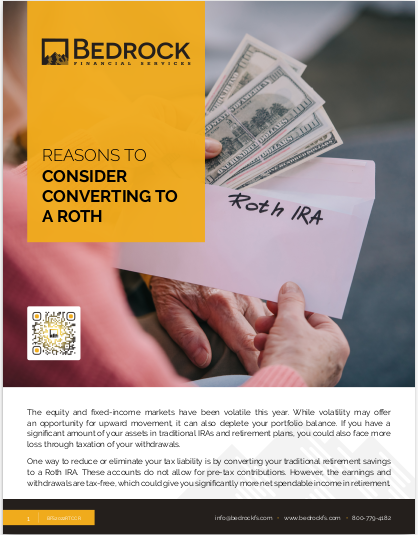Key Takeaways
-
If a lead ghosts you after the first call, it doesn’t mean the opportunity is dead. It means your strategy needs to evolve.
-
The most effective follow-up approach in 2025 includes timed, value-driven messages and an automated but personalized re-engagement plan.
Why Leads Ghost After the First Call
You had what felt like a great initial call. They sounded interested, engaged, even appreciative. Then—radio silence. No returned calls, no replies to emails. You’re not alone. In 2025, ghosting is one of the most common patterns in the lead journey.
Understanding why leads ghost is the first step to re-engaging them. Here are a few possibilities:
-
They were never serious: Some leads are curious but not committed.
-
They were overwhelmed: The information may have been too much, too fast.
-
They weren’t ready to decide: Timing matters more than persuasion.
-
Life got in the way: Health, family, job changes—you’re not always the priority.
Ghosting doesn’t mean rejection. It usually means indecision, delay, or distraction.
What Not to Do When You Get Ghosted
Before jumping into action, it’s important to pause and avoid common mistakes that can make the situation worse:
-
Don’t spam them: Multiple emails or calls a day won’t bring them back—they’ll push you further away.
-
Don’t sound desperate: Phrases like “Just checking in again” or “Haven’t heard back from you” show you’re reactive instead of helpful.
-
Don’t give up too soon: Some leads resurface after weeks or months.
Your goal is to stay present, not pressuring.
A 30-Day Ghost Recovery Plan
When a lead ghosts you, don’t chase—recalibrate. Here’s a structured 30-day plan that allows for re-engagement without annoying persistence.
Day 1-3: Light Reminder
Send a short email or text expressing appreciation for the initial conversation. Reinforce that you’re still available if they have questions or want to revisit anything.
-
Subject: “Still thinking about our conversation”
-
Tone: Professional, calm, confident
-
Purpose: Keep the door open without applying pressure
Day 4-7: Share Something Useful
Send a short message with a link or attachment that solves a small problem or answers a question they had.
-
Examples: Educational content, FAQ, eligibility criteria overview
-
Emphasis: Provide value, not pitch
Day 8-14: Follow Up by Phone (Once)
Make one phone call. If they don’t answer, leave a voicemail that briefly mentions the value of reconnecting, not what you’re selling.
-
Keep it under 45 seconds
-
End with: “No rush, just reach out when it makes sense.”
Day 15-21: Let It Breathe
Take a break from outreach. This silence helps create space for them to miss the value you bring. You stay top of mind by not overreaching.
-
No emails
-
No calls
-
No texts
Day 22-30: Personal Story + Exit Path
Reach out one final time with a human touch. Share a personal anecdote, then give them a graceful way to opt out.
-
“I totally understand if now isn’t the right time. If things change, I’m still here.”
-
Link to unsubscribe or pause communication
This makes it easier for them to return later—on their terms.
Re-Engagement Strategies That Actually Work in 2025
Your follow-up shouldn’t feel like follow-up. It should feel like helpful continuity. Here are proven tactics you can integrate today:
Use Smart Timing
Timing is everything. In 2025, most clients make a decision within 30-90 days after the first contact. But their actual re-engagement point varies. Use a CRM tool to schedule follow-ups at:
-
3 days
-
2 weeks
-
1 month
-
Quarterly touchpoints (if no response at all)
Rotate Your Channels
People ignore what becomes predictable. If you always email, try calling. If calls aren’t picked up, try a LinkedIn message or even a handwritten note.
-
Email: Informative
-
Phone: Empathetic
-
Text: Short and actionable
-
Social: Light and authentic
Offer a Micro-Decision
Don’t ask them to sign up or buy. Ask for something small:
-
“Would you like a short 2-minute summary?”
-
“Want me to send you a quick comparison sheet?”
This removes commitment pressure and re-opens dialogue.
Create a Re-Entry Path
Sometimes people ghost because they feel bad for ghosting. Make it easy for them to come back without shame:
-
Include lines like: “No problem at all if you got busy.”
-
Avoid saying: “I’ve been waiting to hear back.”
Automate Thoughtfully
Automation is not about blasting reminders. It’s about consistency with compassion. Here’s how to automate with empathy:
-
Set drip emails spaced out by 5-10 days
-
Use dynamic content based on their original interest
-
Insert real human touches like your signature or name
For instance, if they expressed interest in long-term coverage, don’t follow up with a short-term pitch. Stay aligned with their context.
What Ghosting Doesn’t Mean
It’s tempting to interpret silence as rejection. But in reality, ghosting doesn’t always mean they’re gone for good.
-
It doesn’t mean they didn’t like you: Silence is often circumstantial.
-
It doesn’t mean the product failed: They might still want what you offer, just not right now.
-
It doesn’t mean you should move on completely: Keep light-touch follow-ups scheduled every few months.
Ghosting is a pause, not a period.
Redefining Lead Success
Success with leads is not defined by immediate conversion. In 2025, lead nurturing is a long game. Your job isn’t to force the sale; it’s to create conditions where saying yes becomes easy.
What that looks like:
-
Being consistently helpful
-
Staying respectfully persistent
-
Giving space while staying in the loop
Some leads circle back after 3 months. Others take 6 months or more. With the right systems, you’ll be there when they’re ready.
Stay Ready for When They Come Back
When a lead finally responds, avoid jumping into a pitch. Instead:
-
Acknowledge the gap with warmth.
-
Recap the original context without pressure.
-
Ask where they are now, not where you left them.
This positions you as a professional who respects timing—not someone who keeps score.
Stop Taking It Personally, Start Taking It Strategically
Being ghosted can be frustrating, but it’s part of the reality of selling in 2025. When you respond with strategy instead of emotion, you build long-term trust and open the door for future conversions.
Want more ways to keep your lead funnel warm without burning out? At Bedrock Financial Services, we support independent agents with tools that make re-engagement easy and consistent. From automation systems to ready-to-send content, we help you stay present in your prospects’ world—even when they’re silent.
Sign up with us today to turn ghosted leads into future clients.







